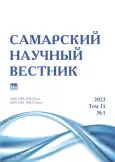A preliminary assessment of the impact of the Przewalski’s horse on myrmecocomplexes (Hymenoptera, Formicidae) of the Cis-Ural steppe site in the Orenburg Reserve
- Authors: Bulgakov E.A.1, Arbuzov M.A.1, Bulgakova M.A.2
-
Affiliations:
- United Directorate of the Orenburgsky and Shaitan-Tau State Nature Reserves
- Orenburg State University
- Issue: Vol 11, No 1 (2022)
- Pages: 31-35
- Section: Biological Sciences
- URL: https://ogarev-online.ru/2309-4370/article/view/108319
- DOI: https://doi.org/10.55355/snv2022111102
- ID: 108319
Cite item
Full Text
Abstract
The paper discusses the results of the analysis of the species dynamics of the myrmecofauna inside the acclimatization pens of the Przewalski’s horse in the Orenburg State Reserve. Although the horse is a specially protected species, the impact it can have on steppe ecosystems needs to be assessed through annual monitoring. Like other ungulates, Przewalski’s horses eat and trample vegetation as well as compact the soil due to the mechanical destruction of soil aggregates. It is shown that grazing of large ungulates has both direct and indirect effects on the myrmecocomplex. Based on the results of the study, the main patterns of species imbalances on the territory of sites in acclimatization paddocks subject to pasture influence were established. The results of the work have shown that there are such ant species as Cataglyphis aenescens N., Lasius alienus F., Tetramorium caespitum L., Messor muticus N., Cataglyphis aenescens N., Temnothorax sp., Tetramorium caespitum L., Proformica epinotalis Kuznetsov-Ugamsky on the territory. In open, well-heated areas, dominant positions were occupied by Cataglyphis aenescens N., while in the presence of vegetation, soil zoonecrophages Lasius alienus F. and Tetramorium caespitum L. dominated. The paper reflects the experimental results, analyzes them, and concludes about the probable reasons for the dominance of the species.
Keywords
Full Text
##article.viewOnOriginalSite##About the authors
Evgeny Aleksandrovich Bulgakov
United Directorate of the Orenburgsky and Shaitan-Tau State Nature Reserves
Email: orenbulg@mail.ru
head of the Przhevalsky Horse Reintroduction Center
Russian Federation, OrenburgMaksim Aleksandrovich Arbuzov
United Directorate of the Orenburgsky and Shaitan-Tau State Nature Reserves
Email: kingwhitelui@gmail.com
leading specialist of the Przhevalsky Horse Reintroduction Center
Russian Federation, OrenburgMarina Aleksandrovna Bulgakova
Orenburg State University
Author for correspondence.
Email: biosu@mail.ru
candidate of biological sciences, associate professor of Biology and Soil Science Department
Russian Federation, OrenburgReferences
- Weltz N., Wood M.K., Parker E.E. Flash grazing and trampling effects on infiltration rates and sediment yield on a selected New Mexico range site // Journal of Arid Environment. 1989. Vol. 16. P. 95-100.
- Levin P.S., Ellis J., Petrik R., Hay M.E. Indirect effects of feral horses on estuarine communities // Conservation Biology. 2002. Vol. 16. P. 1364-1371.
- Thurow T.L. Hydrology and erosion / R.K. Heitschmidt, J.W. Stuth (eds.). Grazing Management: An Ecological Perspective. Timber Press, Portland, 1991. P. 141-159.
- Hobbs N.T. Modification of ecosystems by ungulates // Journal of Wildlife Management. 1996. Vol. 60. P. 695-713.
- Augustine D.J., McNaughton S.J. Ungulate effects on the functional species composition of plant communities: herbivore selectivity and plant tolerance // Journal of Wildlife Management. 1998. Vol. 62. P. 1165-1183.
- Andersen A.N., Sparling G.P. Ants as indicators of restoration success: relationship with soil microbial biomass in the Australian seasonal tropics // Restoration Ecology. 1997. Vol. 5. P. 109-114.
- MacMahon J.A., Mull J.F., Crist T.O. Harvester ants (Pogonomyrmex spp.): their community and ecosystem influences // Annual Review of Ecology and Systematics. 2000. Vol. 31. P. 265-291.
- Rosenberg D.M., Danks H.V., Lehmkuhl D.M. Importance of insects in environmental impact assessment // Environment Management. 1986. Vol. 10. P. 773-783.
- Effects of feral horses in Great Basin landscapes on soils and ants: Direct and indirect mechanisms // Journal of Arid Environments. 2006. Vol. 66 (1). P. 96-112.
Supplementary files







